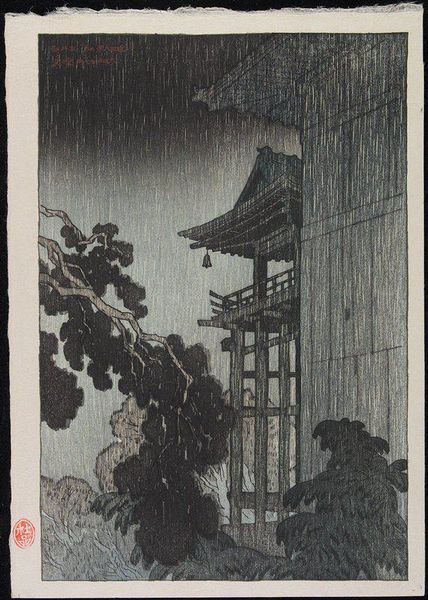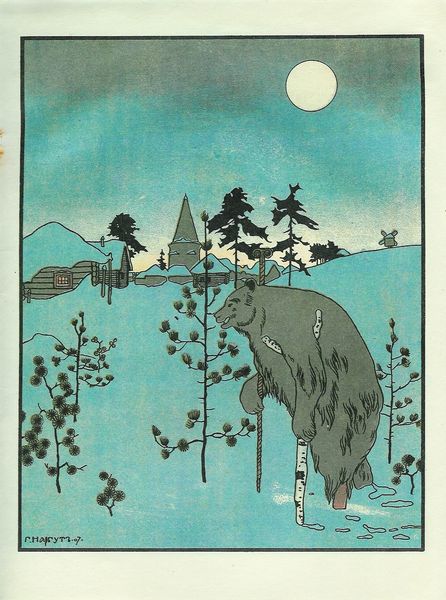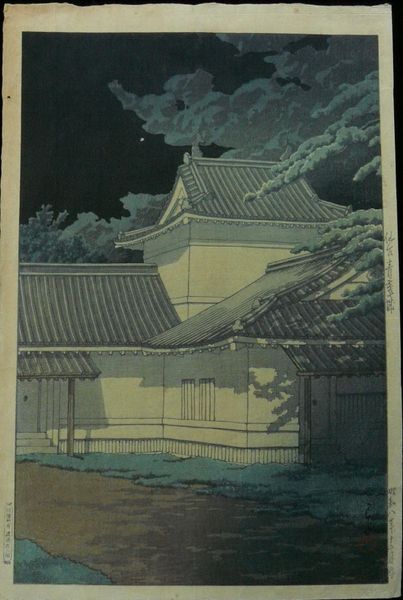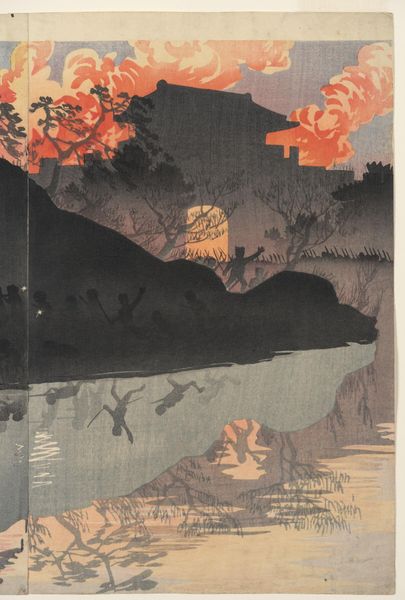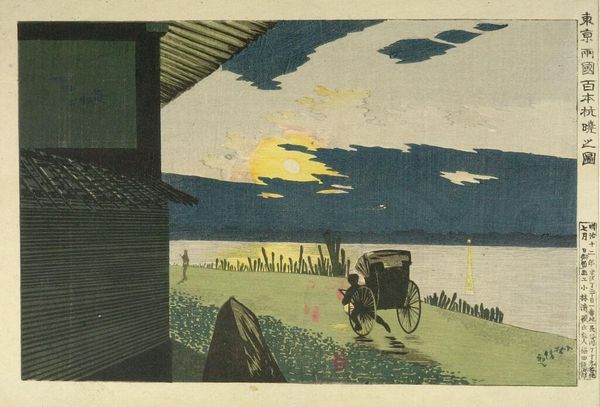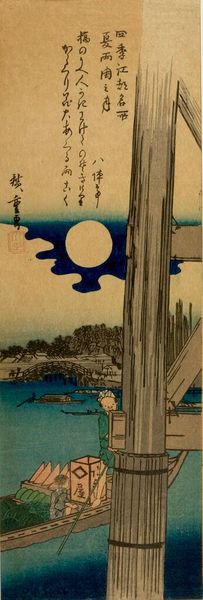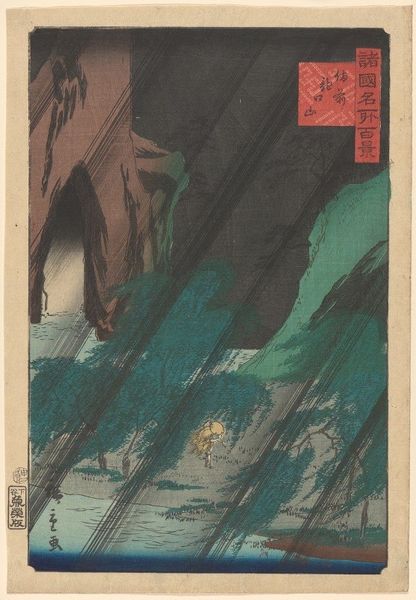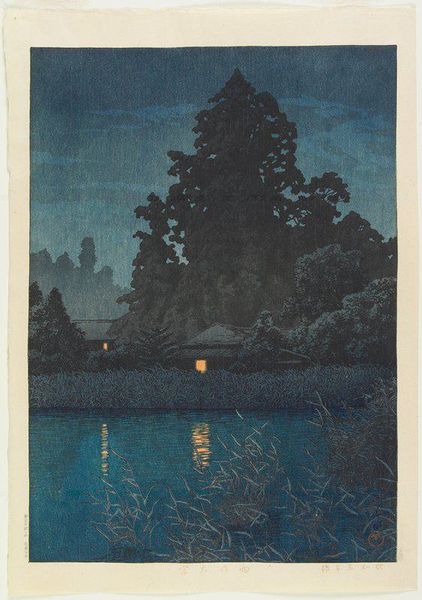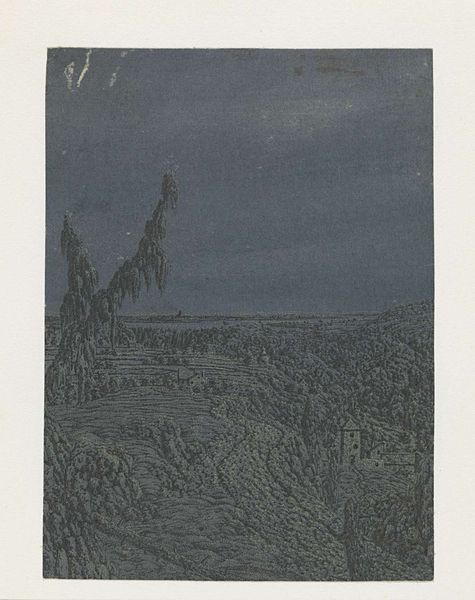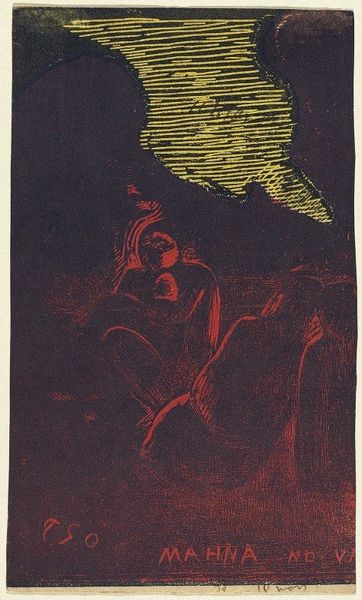
Dimensions: 11 7/8 × 7 7/8 in. (30.16 × 20 cm) (image)19 × 15 × 1 1/2 in. (48.26 × 38.1 × 3.81 cm) (outer frame)
Copyright: No Copyright - United States
Editor: So, this is Ito Shinsui's "Ishiyama Temple," a woodblock print from 1917. It has a kind of dreamlike, nocturnal feel. What catches your eye when you look at this piece? Curator: I'm immediately drawn to the materiality. Notice the flat planes of color achieved through the woodblock process. This was at a fascinating intersection where traditional ukiyo-e techniques met modern printmaking. The labor involved in carving and printing those blocks would have been significant. Editor: Right, the process is quite involved. Does the choice of woodblock as a medium have any significance in relation to the subject matter, the temple itself? Curator: Absolutely. Wood, as a material, connects to both nature and craft traditions central to Japanese culture. It underscores the tangible labor and connection to the land. How does this connect to other depictions of temples, in your opinion? Editor: That's a good point. Thinking about labor, do you think the printmaking process influences how the landscape is presented? It seems almost idealized, simplified. Curator: Precisely! The act of carving reduces the landscape to essential forms. This abstraction reflects a modern sensibility adapting traditional themes for mass consumption. It removes much of the ‘high art’ perception we would find in other formats. What is the perceived impact on society as these prints are released and consumed? Editor: That makes a lot of sense. I guess I was seeing the simplified forms as aesthetic choices, but now I can see how it also reflects the entire system of production. Curator: Exactly. Looking at the piece from a materialist perspective highlights how artistic choices are inherently linked to broader social and economic forces. I’ve learnt the valuable impact the social economy plays here, thanks for the question! Editor: Yeah, understanding the means of production definitely changes how I see it. Thanks, I never considered woodblock through this viewpoint.
Comments
minneapolisinstituteofart about 2 years ago
⋮
According to tradition, in the 11th century Lady Murasaki began writing her famous novel, The Tale of Genji, while seated on a veranda at Ishiyama Temple, on the shore of Lake Biwa. The sight of the harvest moon rising over the lake inspired her. Thus, for most Japanese, Shinsui’s view of a full moon shining on an empty covered veranda at Ishiyama Temple evokes thoughts of the famous author composing her novel of courtly love.
Join the conversation
Join millions of artists and users on Artera today and experience the ultimate creative platform.
